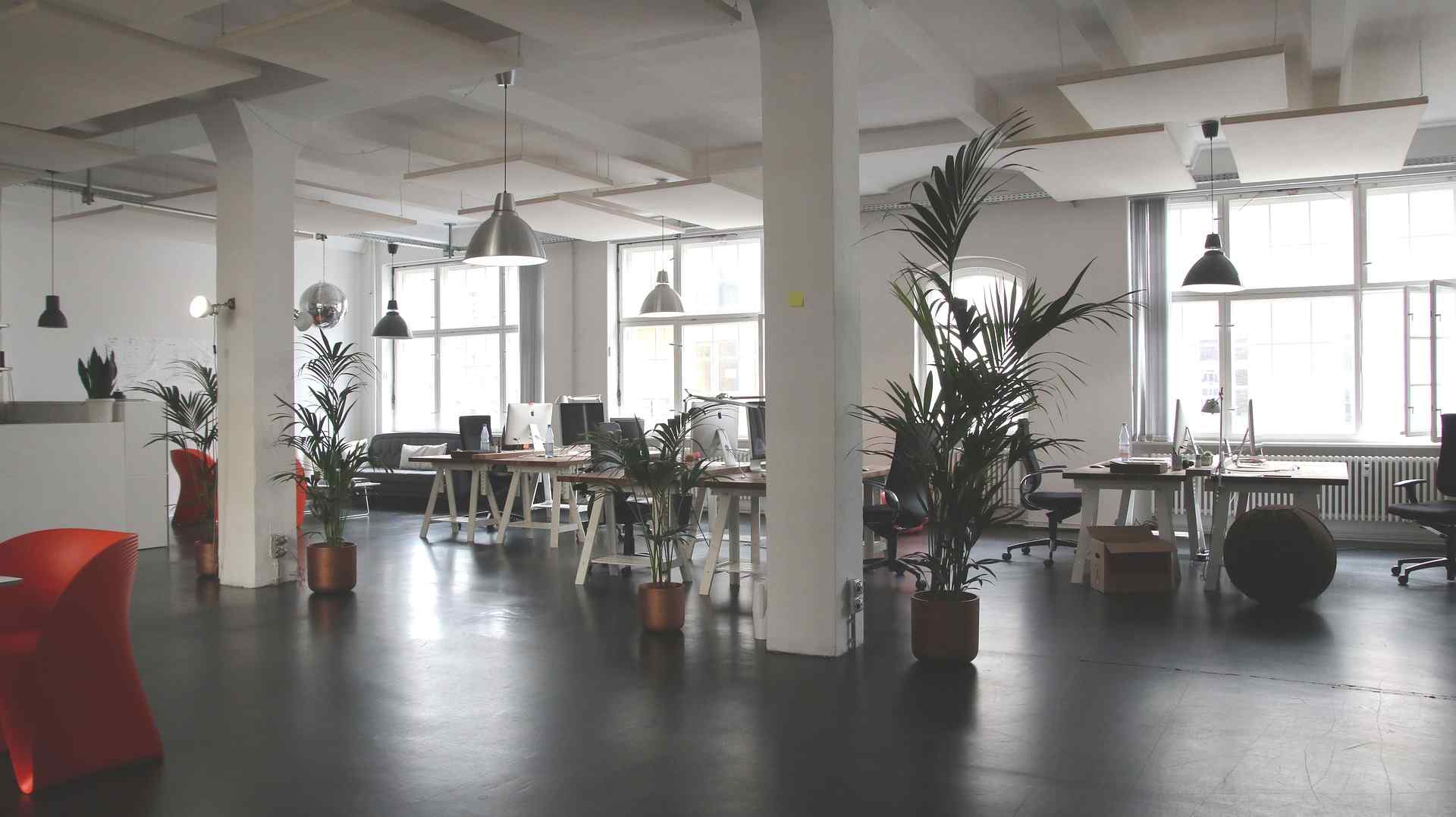
The Ultimate Guide To Biophilic Design In The Workplace
The concept of biophilia dates back to 1984, when it was introduced by a man named Edward O. Wilson. Wilson’s book suggested that humans have an innate attraction to nature and the outside world. This “urge to affiliate with other forms of life” has been ingrained in humans for thousands of years due to living off the land.
However, biophilia has become an increasingly hot topic in the increasingly urban world we now live in. As urban spaces expand and evolve, often at the expense of green, natural environments, the importance of integrated biophilic design into workplaces has become ever more important.
A survey of 1,000 office workers, commissioned by Ambius, found that more than a third (35%) of respondents don’t get over 15 minutes of outdoor time during a typical working day. When you consider that a typical prison inmate is normally granted an hour per day of outdoor time, this statistic is even more alarming.
That’s why biophilic office design has become such an important factor for innovative, forward-thinking companies looking to redesign their workplaces and promote the wellbeing of their employees. Businesses may not even be aware of the concept of biophilia, but there is no doubt they are increasingly conscious of the need to reconnect the workplace with the outside world.
What are the real-world effects of biophilic design on employees?
Recent studies have proven a direct link between the presence of plants and the exposure to natural light with staff happiness and productivity.
Researchers at the University of Exeter found that businesses with “green” workplaces had happier, more content staff as opposed to those with “lean” workplaces and a lack of live foliage. It also predicts that transforming a lean workplace into a green one could lead to improvements in employee productivity by as much as 15%.
If you consider the scientific theory surrounding biophilia, these studies would appear to make sense. Increased levels of natural daylight in the workplace should result in an increased presence of melatonin, improving an individual’s mental alertness. Furthermore, heightened exposure to natural light gives employees a much-needed vitamin D boost, improving their physical and psychological condition.
How to create an office that stays true to biophilic design principles
For businesses looking to embrace the concept of biophilia and encourage employees to lead a healthier, balanced lifestyle, there are several effective methods of introducing biophilic design into your workplace:
-
The utilisation of natural colour schemes and patterns
Incorporating natural patterns, shapes and colours into your redesigned workplace is an integral part of a biophilic office. Colours that a human would perceive as ‘earthy’ are ideal here, ranging from greens and browns through to whites and blues that replicate the vast expanse of the sea and sky. Green hues are proven to be particularly effective in promoting productive, motivating office environments.
-
Natural materials should be welcomed
Internal finishes to your redesigned office should incorporate as many natural materials as possible. Whether it’s cork, stone, wood or granite, utilising these materials on desks, shelves, cupboards or even chairs are a great way of reconnecting interiors with the great outdoors. The natural appearance can even be achieved by professionals that work from home.
-
Maximise your office’s natural light
The best biophilic offices are those that flood natural daylight into working areas. Mitigating the need for artificial lighting is more important than ever given that studies have shown it can have a damaging effect on an employee’s wellbeing and their eye health. To maximise the benefits of natural light in your redesigned workplace, keep blinds up as high as possible. No workstations should be situated more than 25 feet from an office window. Central atriums are particularly popular for communal spaces, allowing staff to reconnect with nature during their downtime.
-
Invest in real (and artificial) office plants
Last but by no means least, the simplest but most effective way to stay true to biophilic design principles is to install a selection of real and artificial plants within your workplace. Artificial plants can have a positive effect as a human’s mood and concentration levels react well to seeing natural landscapes. Meanwhile real plants can help reduce CO2 levels and enhance employees’ sense of wellbeing. ‘Living walls’ i.e. an entire wall of greenery, are also in vogue currently.
The beauty of biophilia in the workplace is that it is achievable regardless of your office refurbishment budget or resources. Potted plants don’t have to cost the earth – pardon the pun. A hint of nature really can do wonders for your employees’ emotional wellbeing.
Featured Image Source
